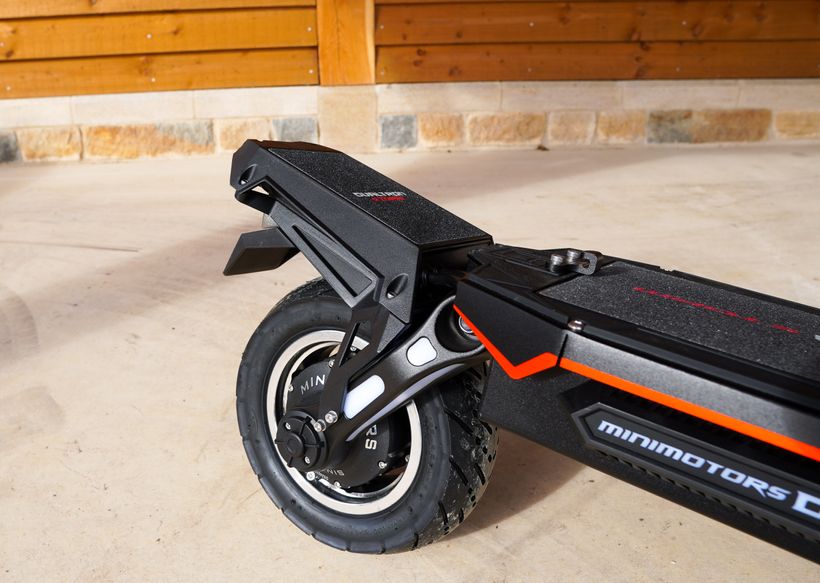Electric Scooter Controllers: A Beginner’s Guide
Controllers are the brain and central nervous system of an electric scooter. They are a combination of circuits, sensors, and firmware that act as your onboard computer, and control all of the scooter’s critical functions.
While this may seem overwhelming, we’ve created this easy-to-follow guide to help you fully understand the ins and outs of controllers.
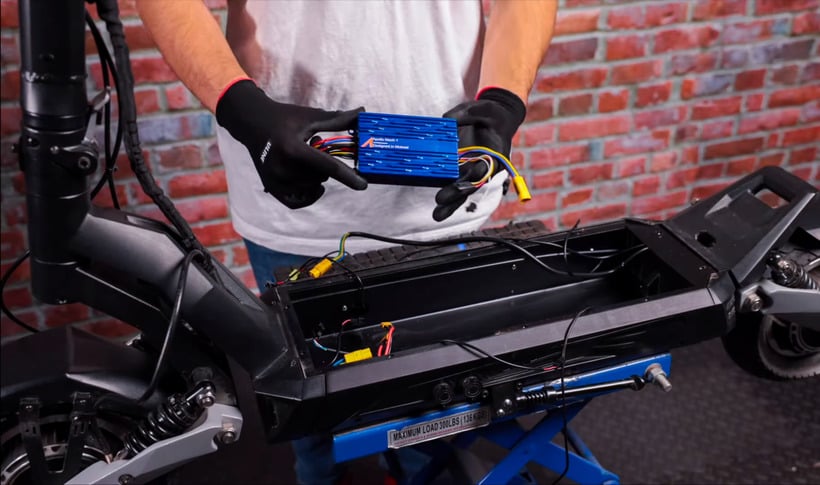
Throughout this guide, you’ll learn what they are, their function, and how their power is measured.
We also explain how they regulate power, and cover the key differences between the two most common electric scooter controllers: Square Wave and Sine Wave.
And, to round off the guide, you’ll learn about maintenance, as well as when and how to replace them.
Learn about what controllers are and why they are important.
The key metrics that tell you everything about controller power.
A run down of how controllers work and their main functions.
Learn about the different types of electric scooter controllers.
Discover the most common places where controllers are stored.
How to maintain and replace electric scooter controllers.
What Are Electric Scooter Controllers?
Controllers are smart devices that monitor and regulate all of the electrical parts of a scooter.
The most simple way to think about a controller is that it’s responsible for the coordination of how battery power is used. This includes power delivery to the motor, throttle, display, wheel sensors, regenerative braking systems, and anything else that relies on an electrical current.
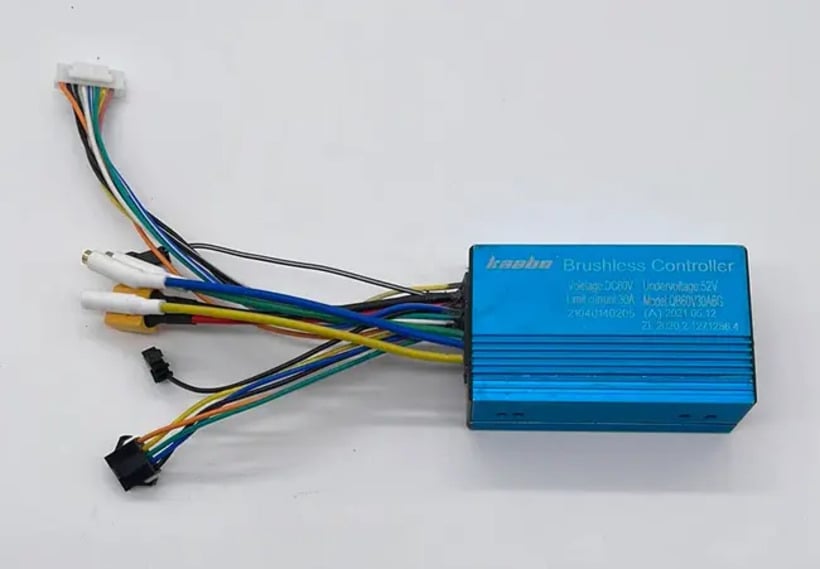
Essentially, a controller is a small computer that acts as an electric scooter’s brain, and through it, you can manage the overall functioning of the scooter.
They are used in all electric scooters and are usually housed in a small box built inside the deck of a scooter. Their main role is to give you precise control over your speed. Single-motor scooters have one controller, while higher-performing dual-motor models have two – one for each motor.
How is Controller Power Measured?
Controllers are rated by how much current (measured in amps) and voltage can pass through them.
Those with high amps and voltages can control more powerful scooters.
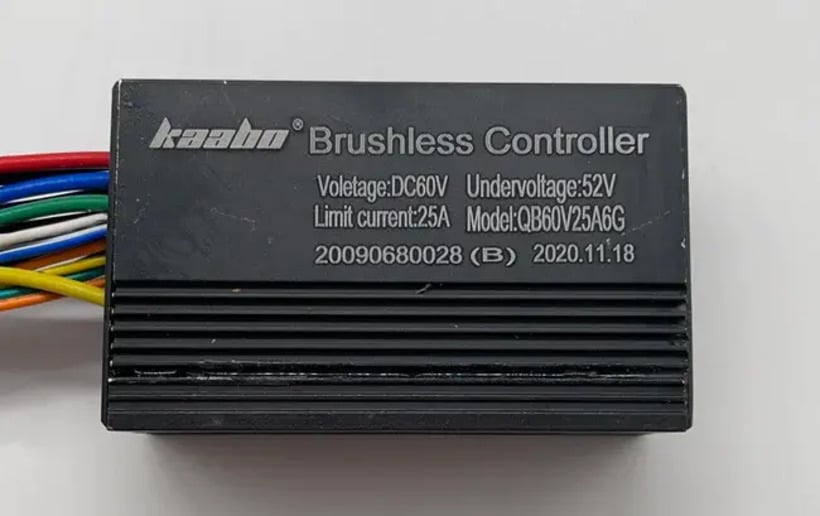
Voltage (V)
Voltage, commonly referred to as electric pressure, is a key measurement of how powerful a controller is. Measured in volts, it tells you the intensity at which the electricity is being pushed through a circuit.
Typically, electric scooter controllers fall into one of these six categories: 36V, 48V, 52V, 60V, 72V, and 84V.
A higher voltage equates to more power, and this results in greater torque, faster acceleration, and higher top speeds.
For example, a high-performance scooter with a large 60V 30Ah battery and powerful 60V 1000W motors will have controllers with a high voltage (60V) to match the rest of the scooter.
Current (A)
Measured in amps, current is the rate at which electricity flows through a circuit. Like voltage, it’s a useful indicator of how powerful a controller is.
Commonly, electric scooter controllers have an amperage that falls in one of these five buckets: 10A, 25A, 30A, 40A, and 50A.
The higher the current, the faster the controller can respond to signals and inputs from a scooter’s electrical parts. The most noticeable impact of this is greater torque, faster acceleration, and higher top speeds.
For example, a high-performance scooter with a large 60V 30Ah battery and powerful 60V 1000W motors will have controllers with a high voltage (60V), but also a high amperage (40A).
How Do Controllers Work & What Are Their Functions?
A controller’s main function is the act as the brain and central nervous system of an electric scooter. They are a combination of circuits, sensors, and firmware that act as your onboard computer, and control all of the critical functions of your electric scooter. Their main job is to manage the input and output of both voltage and amperage.
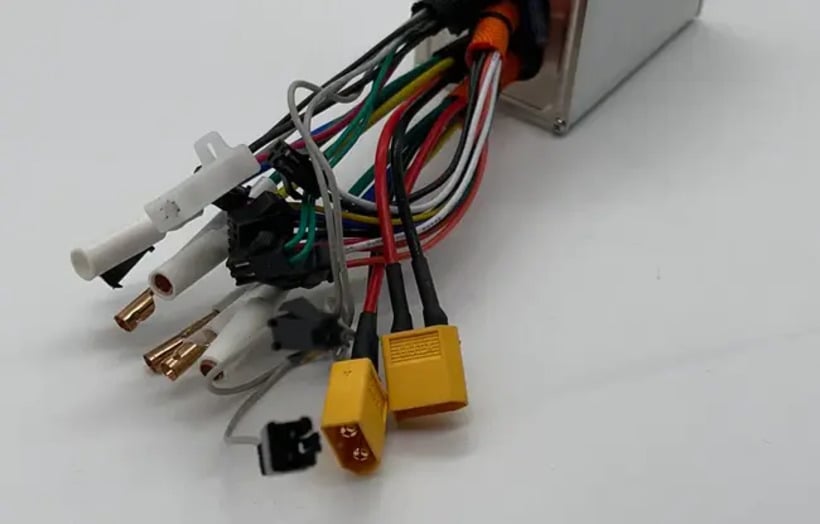
The first thing a controller looks for is its power source. In the case of a scooter, this is the battery. It calculates your battery’s voltage and amps, and if compatible, distributes that power to the controller’s various functions.
Here, it coordinates the inputs from your scooter’s electrical components and determines how much power should be used. It’s also responsible for regulating power usage to protect the system from damage.
A simple way to separate the function of a controller is to divide its main responsibilities into two board categories. These include power management and maintaining the health of the scooter’s components.
Power Management
Motor Power
When you press on your scooter’s throttle, it activates a magnetic field within the motor. The voltage of the magnetic field is detected by a sensor that communicates this to the controller. This input is then used to send the correct voltage to the motor, thereby allowing it to rotate at the rate that the throttle requires.
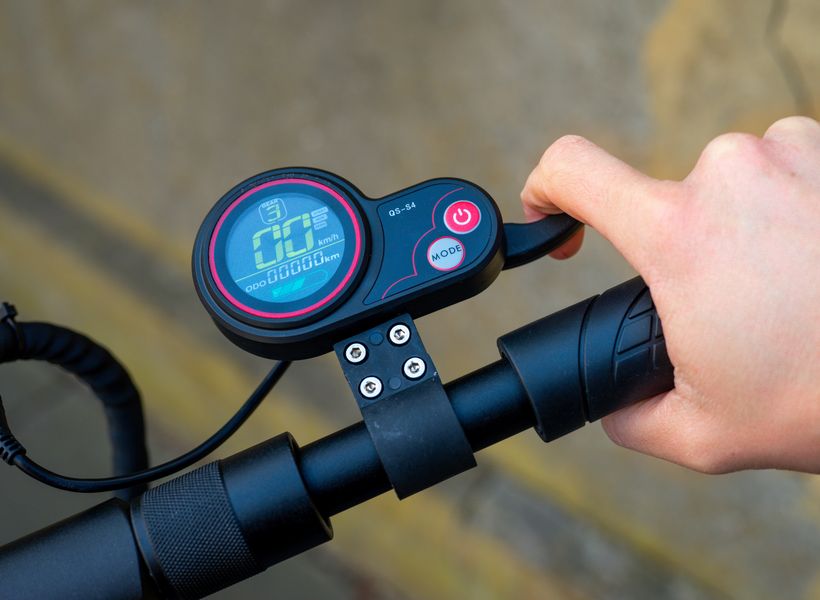
No matter how hard you press on the throttle, the voltage of the magnetic field will be matched by the controller. For instance, if your scooter is equipped with a 60V controller and you push the throttle slightly, then it may only output 20V, resulting in a slow and steady speed. However, if you apply full pressure to the throttle, the controller will output its maximum power of 60V, resulting in faster acceleration and higher speeds.
Cutting Power When Brakes Are Applied
When the brakes are applied, it’s the controller that stops the flow of electricity between the battery and the motors.
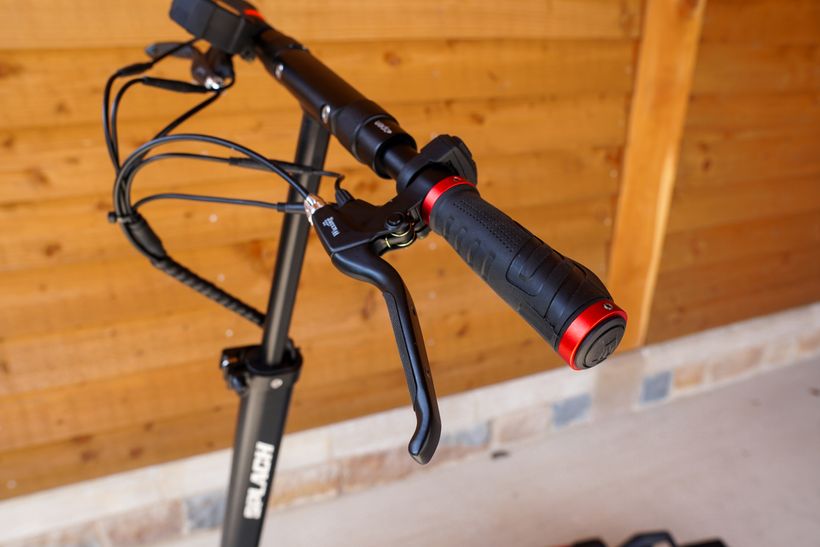
This overrides all other signals and prevents the motors and brakes from becoming damaged by working against each other.
Electronic, Regenerative & Anti-Lock Braking
When electronic brakes are applied, the controller sends a current to an electromagnet inside the motor hub. This creates a magnetic field that exerts a magnetic pull on the spinning central spindle to slow the rotation of the wheel.
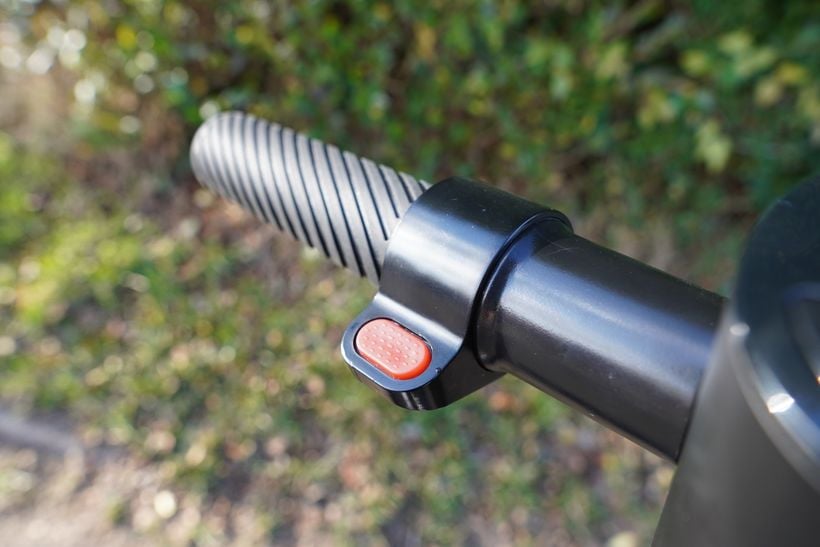
Similarly, if you’re scooter has a regenerative braking system, the controller changes the flow of electricity from the motor back into the battery. This means that the motor is no longer powering the wheels, but charging the battery instead.
Because the scooter is still moving forward while braking, kinetic energy is created which keeps the motor turning. This creates electricity which is then directed to the battery for storage. By drawing the kinetic energy from the motor in the form of electricity, drag is created and this slows the rotation of the wheels.
As for anti-lock braking systems, otherwise known as ABS, these also rely on controller input to work.
Anti-lock braking systems are designed to prevent wheel lock so that you can remain safe and in control at all times. They work by sensing when the wheels are about to lock and then rapidly reducing and increasing the braking pressure multiple times per second. This allows the wheels to keep moving as the scooter slows down, instead of locking up.
On each wheel is a speed sensor. These detect when the brakes lock and immediately signal this to the controllers. Once the controller receives the signal, it activates the ABS.
Cruise Control
When the cruise control function of a scooter is activated, the controller uses speed sensors on each wheel to keep the scooter running at a constant speed. Once engaged, you can remove your thumb or finger from the throttle and let the controller do all the hard work for you.
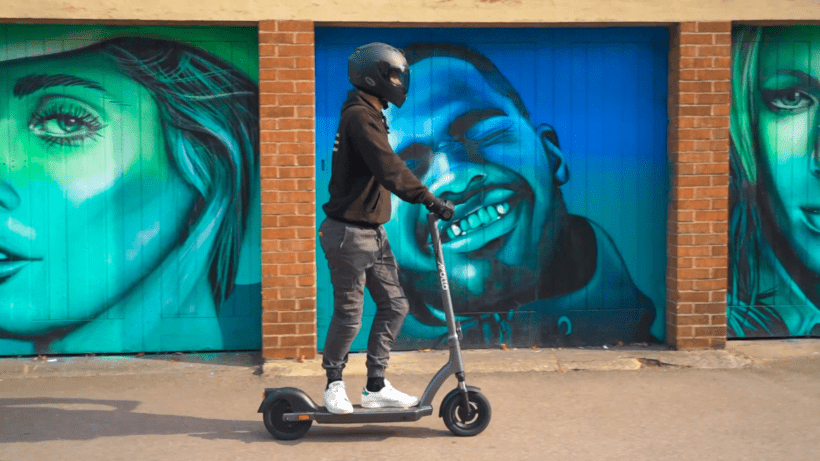
Maintaining the Health of Components
Over-Voltage Protection
Over-voltage protection is a feature that shuts down the power supply when the voltage exceeds a preset level.
Most power supplies use over-voltage protection to prevent damage to their electronic components. The impact of over-voltage can cause certain components to degrade and in some cases, cause malfunctions or fires.
The most notable function of a controller here is to constantly monitor the battery voltage so that it doesn’t over-charge.
Low-Voltage & Over-Discharge Protection
Low-voltage protection is a control that prevents battery packs from over-discharging.
When your electric scooter battery has low voltage (i.e. has a low charge), leaving it in that discharged state puts it at a higher risk of remaining entirely discharged. Under these circumstances, if your battery happens to get discharged beyond the standard cut-off point, then its performance will significantly reduce, as will its lifespan.
It’s therefore the controller's role to monitor the voltage of the battery and then disconnect it from the load if it senses that the voltage has dropped below a minimum limit.
Over-Current Protection
Over-current protection, otherwise known as current limiting, is the process of limiting or entirely disabling current flow. It’s a safety mechanism that prevents currents that are higher than the acceptable rating of the circuit or equipment.
Uncontrolled over-current leads to excessive generation of heat, the risk of fire, and can damage equipment. It’s therefore very important to monitor and protect against this.
In electric scooters, controllers monitor the current that flows between the battery and the motors. If the current rises too high, the controller will limit it to prevent permanent damage.
Over-Temperature Protection
Over-temperature protection is a system that limits or shuts down the power supply when the internal temperature exceeds a safe value.
Here, controllers monitor the temperature of the transistors that regulate the flow of electricity within the motors. If they get too hot, the controllers will shut them down to prevent overheating.
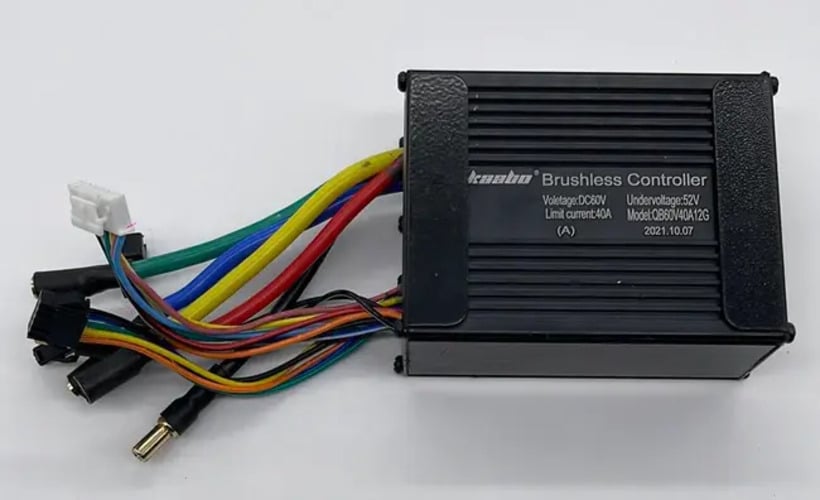
Can the Functions of A Controller Be Customized?
Basic electric scooters will let you make minor adjustments to the functions of your scooter’s controllers. Changes include things like controlling the brightness of the display, setting the window of time after which your scooter will automatically go into standby mode, and simple adjustments to braking features such as turning an anti-lock braking system on or off.
Other electric scooters with more powerful controllers, like those found on the NAMI Burn-e 2, can be programmed via advanced settings that are accessible on the scooter’s display. These allow you to input information and adjust how the controller behaves in certain situations.
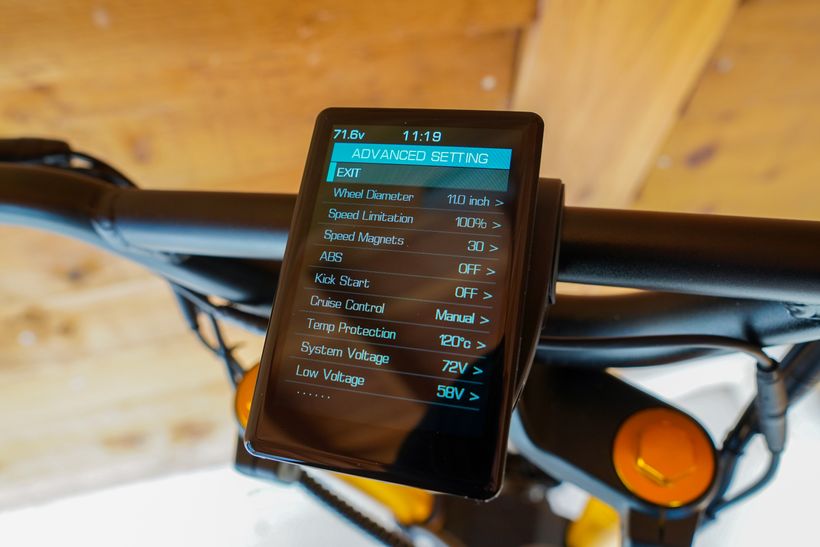
Some programmable controllers can be used to adjust the top speed, acceleration strength, and intensity of the regenerative brakes. Others allow you to set the maximum controller current and make precise adjustments to how power is distributed to each motor independently. In some cases, you can even set the temperature at which the motors automatically switch to a lower, cooler setting.
With a wealth of customization at your fingertips, you can create customized riding modes based on different power settings.
Types of Controllers (Square Wave vs Sine Wave)
There are two main types of electric scooter controllers: Square Wave and Sine Wave. Both deliver power very differently, with Sine Wave being the preferred option.
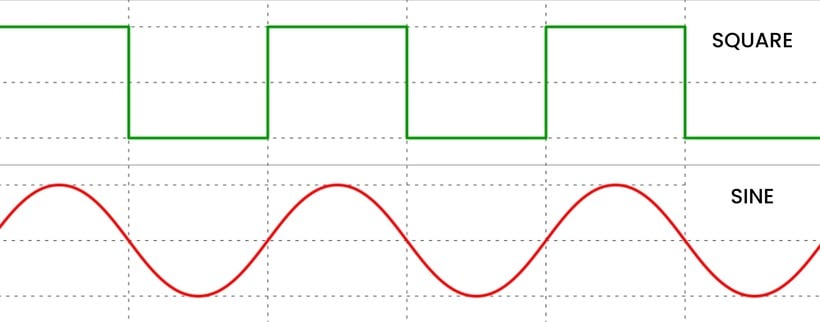
Square Wave
Until recently, Square Wave controllers used to be the most common controller type used in electric scooters.
As the name suggests, Square Wave controllers switch on the flow of electricity immediately. Imagine a light switch being flicked on and off in a dark room. The room goes from being pitch black to filled with light in an instant. The same abrupt flow of power is generated by Square Wave controllers.
Some riders love this because it gives you an instantaneous hit of power. However, for most riders, it can be frustrating and hard to control since the rapid injection of power can rock you back and forth. It’s also hard to maintain a constant speed.
Sine Wave
Sine Wave controllers smooth out the power delivery process by using a consistent flow of current.
While Square Wave controllers can be compared to a simple on/off light switch, a Sine Wave one is more like a roll-on/roll-off dimmer dial. Instead of a dark room being filled immediately with light, the dimmer dial gradually increases the light level. The same gradual pattern of power is generated by Sine Wave controllers.
As a result, it’s far easier to modulate your acceleration, giving you greater control.
Where Are Electric Scooter Controllers Stored?
Controllers can be stored almost anywhere there’s space. However, the most common places are within the deck, stem, and kickplate.
Deck
Most scooter controllers are kept in or under the deck, particularly if the battery is also stored here.
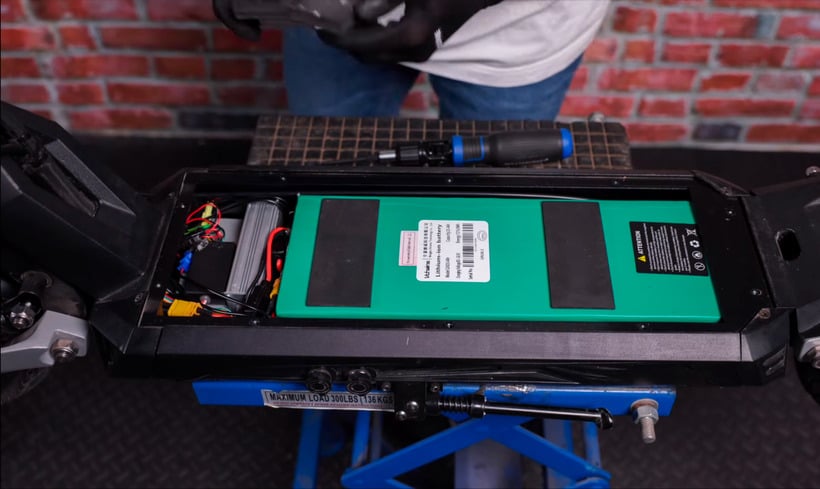
There’s plenty of space in the deck, so there’s no need to build any additional housing or widen any parts of the frame. However, because the inside of the deck is enclosed, temperature control can be an issue.
To combat this, some manufacturers couple the controllers to the underside of the deck so that they can be cooled by the air flowing over them.
Stem
Scooters with the battery stored in the stem sometimes keep the controllers there too. This is because the stem will likely have been made wider to keep the battery, so there’s also plenty of space for the controller.
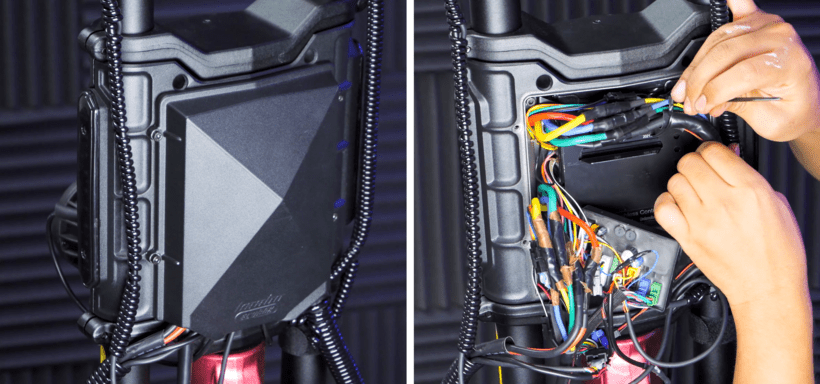
Any components stored here are well protected, but a scooter with a thicker stem can be harder to carry when in its folded position.
Some models, like the Wolf King GT, have dedicated stem-mounted controller boxes. Not only do these create more space in the deck to allow for bigger batteries, but they take advantage of natural air cooling, too.
Controller Maintenance: What to Look Out For
How to Repair and Fix Electric Scooter Controllers
Electric scooter controllers are complex units containing processors, circuits, and many other components. Consequently, if yours isn’t working correctly, it’s best to contact the manufacturer and organize for it to be repaired.
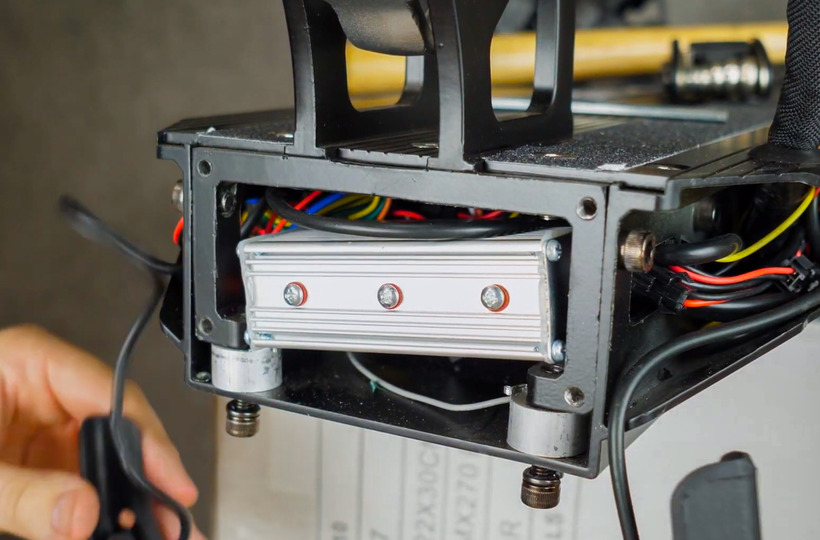
If you think that your controller is damaged or not working properly, here are some things to look out for:
- Slower acceleration when you press the throttle
- No acceleration when you press the throttle
- All the displays and lights work, but the motor is unresponsive
- The regenerative brakes don’t work
- There’s a buzzing noise coming from the controller
- There is a burning smell coming from the controller
- The area of the scooter around the controller feels excessively hot
- You’ve fully charged the battery, but the scooter still won’t move
- You’ve replaced all the fuses and circuit breakers, and the scooter still won’t move
Any of these could indicate a problem with the controller. At this point, it’s worth checking the troubleshooting guide in your user manual and contacting a professional.
To ensure your controller continues to work at peak performance for many years, it’s essential that you only use it according to the manufacturer’s instructions and follow these tips:
- Avoid riding up hills that are steeper than the maximum incline rate
- Always use the correct battery charger
- Don’t swap any of your scooter parts for non-standard replacements
How to Cool Electric Scooter Controllers
The electricity passing through a controller can cause it to get hot. Most manufacturers take steps to ensure that it won’t overheat. These include:
Heat Sinks
Heat sinks are systems that draw the heat away from mechanical components by transferring it into a liquid coolant or air.
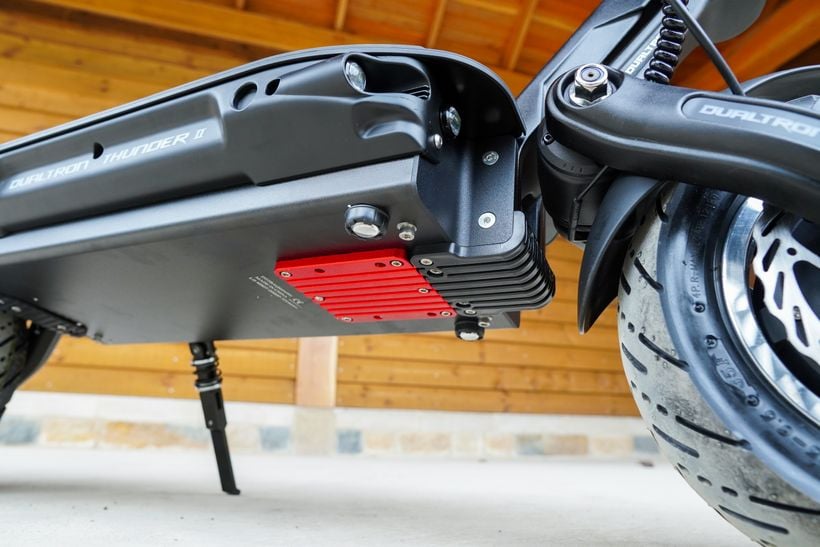
Some scooters, such as the Dualtron Thunder 2 and NAMI Burn-e 2, position heat-sensitive controllers at the front or underside of the deck so that cool air can flow over them and allow heat to dissipate.
Others use designs that surround the controllers with heat sinks to draw the heat away.
However, not all scooters are made equal and some have their controllers stored deep inside the deck where it’s almost impossible to cool them down.
Intelligent Temperature Controls
The vast majority of good-quality controllers use sensors to monitor and self-regulate their temperature.
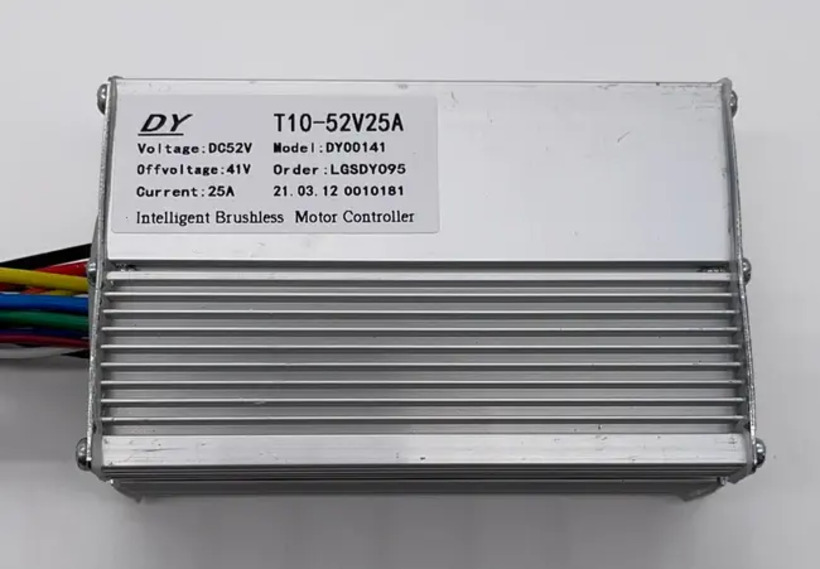
If it exceeds safe levels, they lower power output to reduce heat and prevent damage. Once cooled, the power output will increase.
As previously mentioned, some advanced controllers even let you set the temperature at which they switch to a lower power mode.
Replacing and Upgrading Controllers
Can You Add a More Powerful Controller?
When a scooter is designed, all the components, including the controllers, are chosen to match the needs of the motor and battery. That means that an existing controller will already be getting the best out of the other components.
Replacing it with a more powerful version could severely damage your scooter by burning out some of the electrical components.
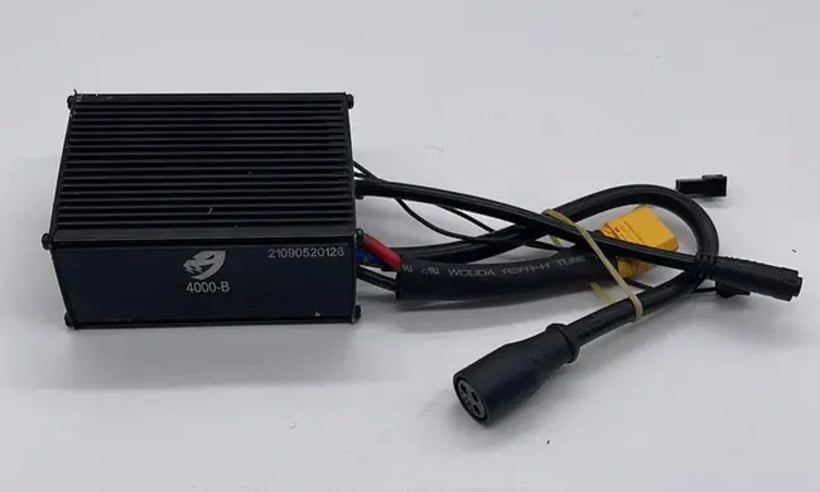
When Should You Replace an Electric Scooter Controller?
You should replace a controller if you experience the following issues:
- The controller has excessive water damage
- The power to the motor is intermittent
- The controller is no longer responding
Most importantly, though, you need to make sure to replace it with the same controller, or at the very least, a controller with the same Voltage and Amps as the one being replaced.
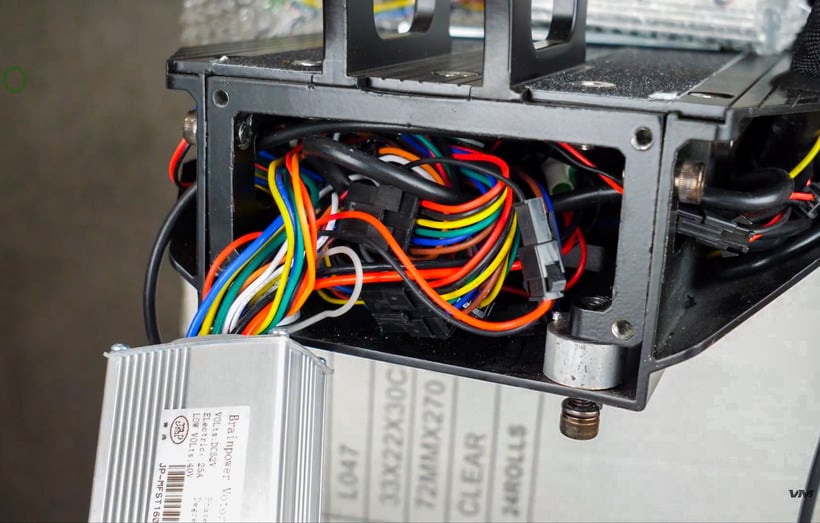
How Much Do Electric Scooter Controllers Cost?
The vast majority of electric scooter controllers cost between $50 and $250, with the cost increasing alongside the voltage and amps.
They are usually available to buy from scooter manufacturers or trusted retailers. However, it’s important to remember that scooters with two motors will also need two controllers.
Some examples of prices include:
- Budget Model – A 36V 10A controller costs $55 (Example: Turboant X7 Max)
- Commuter Model – A 48V 25A controller costs $120 (Example: Horizon)
- Performance Model – A 60V 25A controller costs $190 (Example: INOKIM OxO)
- High-Performance Model – A 72V 30A controller costs $250 (Example: NAMI Burn-e 2)
- Ultra-Performance Model – A 72V 50A controller costs $250 (Example: Wolf King GT)
Where to Find Replacement Controllers
The first place to check when searching for replacement controllers is the website of the brand or retailer that you purchased your scooter from.
To help you find the correct parts, we've listed some popular scooter brands below and linked to retailers that sell controllers for each.
| Scooter Brand | Replacement Controllers |
|---|---|
| Apollo | Get Controller |
| Dualtron | Get Controller |
| EMOVE | Get Controller |
| Fluid | Get Controller |
| GoTrax | Get Controller |
| INOKIM | Get Controller |
| Kaabo | Get Controller |
| Mercane | Get Controller |
| NAMI | Get Controller |
| Turboant | Get Controller |
| Varla | Get Controller |

